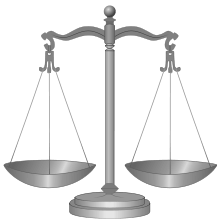Canon law (Church of England)
The Church of England, like the other autonomous member churches of the Anglican Communion, has its own system of canon law.
The principal body of canon law enacted since the Reformation is the Book of Canons approved by the Convocations of Canterbury and York in 1604 and 1606 respectively. There are 151 canons in the collection, some of which reaffirm medieval prescriptions, while others depend on Matthew Parker's Book of Advertisements and the Thirty-nine Articles. They were drawn up in Latin by Richard Bancroft, Bishop of London, and only the Latin text is authoritative. They were published in separate Latin and English editions in 1604. A few, e.g. canon 37, were amended in the 19th century. A Canon Law Commission was appointed in 1939 to reconsider the matter of canon law in the Church of England: it held eight sessions between 1943 and 1947 and then issued a report which included a full set of new canons which were subsequently considered by Convocation.[1]
See also
References
- ↑ Cross, F. L., ed. (1957) The Oxford Dictionary of the Christian Church. London: Oxford University Press; pp. 230-31
Further reading
- Bullard, J. V., ed. (1934) Constitutions and Canons Ecclesiastical, 1604: Latin and English. London: Faith Press
- Archbishops' Commission on Canon Law (1947) The Canon Law of the Church of England; being the report of the ... commission ... together with proposals for a revised body of canon law. London: Society for Promoting Christian Knowledge
- Stubbs, William (1886). "The History of the Canon Law in England". Seventeen lectures on the study of medieval and modern history and kindred subjects. Oxford: Clarendon Press. pp. 292–333.
